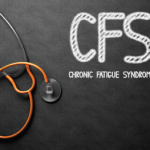The new Institute of Medicine definition has not been universally accepted and, of course, it does not apply retroactively. Thus, the literature includes multiple definitions of ME/CFS. The different definitions all agree that patients have severe unexplained fatigue that is not relieved by rest and reduces activity. The definitions also all acknowledge that this extreme fatigue can be accompanied by additional symptoms. However, the different definitions disagree about the duration of fatigue (six months or not specified), the number of symptoms required (from five to eight) and whether post-exertional malaise is a required symptom or merely an additional symptom.
Not only do the different definitions represent a challenge to understanding ME/CFS, but the heterogeneity of the presentation is also difficult for clinicians and researchers. Patients differ with regards to demographics, duration of illness, comorbid conditions, waxing and waning disease course, medications and environmental exposures. Dr. Unger concluded that the ME/CFS community needs enhanced measurement methods of disease, which will facilitate the study of ME/CFS as a multifaceted illness.
Unfortunately, although researchers have looked for clinical phenotypes that can be used to place patients into subgroups, they have so far been unsuccessful. One potentially important distinction is whether a patient experiences acute onset or gradual onset of the disease. Dr. Unger concluded her presentation by directing the audience to the CDC’s recently updated website on the topic.
Circulating Cytokine Signatures
Jose Montoya, MD, Professor of Medicine at Stanford University in Palo Alto, Calif., provided background on what is known about inflammation in patients with ME/CFS. He began by acknowledging the lack of consensus that ME/CFS is even an inflammatory illness. Although disease onset is often associated with acute infection and presents with ongoing or fluctuating flu-like symptoms, conventional markers of inflammation, such as erythrocyte sedimentation rates and C-reactive protein (CRP), are rarely increased in patients with ME/CFS. Although 39 cytokine signatures are associated with early disease, as chronic fatigue syndrome becomes more severe, evidence of inflammatory pathology decreases.
In their latest research, Dr. Montoya’s laboratory used the Luminex assay to evaluate serum samples and compared the cytokine signatures in patients with ME/CFS with healthy controls.1 They excluded individuals with a history of major depression or substance abuse in the past year. Their study included 192 cases of disease and 392 controls, and they assessed disease severity using the multidimensional fatigue inventory (MFI)-20 survey. The vast majority (96.9%) of their patients with ME/CFS experienced unrefreshing sleep.



